I know it’s not easy to choose the best smoke detector for your home due to the huge amount of models available on the market and the shift towards the IoT has raised even more skepticism over which device can ensure the safety of your home. Furthermore, ever since the ionization sensors have been deemed as bad for the environment, the manufacturers have slowly, but surely shifted towards a purely photoelectric solution, but adjusted in such a way as to detect both the fast flaming and the smoldering fires.
It’s true that a smart device can be a lot more fun due to the mobile application and it can feel exciting when all (or almost all) devices are interconnected and communicate between each other. But I doubt anybody wants to be a beta tester for new technologies, especially when the device has to perform a seemingly easy task: to quickly detect smoke and to sound the horn when it does so (CO detection is also a much welcomed bonus). Nest is one of the first to dare release a smart smoke detector and it needed a couple of generation before getting it right, so the Nest protect 2nd Gen is going to be a part of this article not only due to its additional features, but because it works very well as a smoke detector, being the fastest at detecting smoke.
Since most of you still dislike the idea of a smart device being in charge of your safety and that of your family, I think that the next best thing remains the First Alert SCO501CN smoke and CO detector which still retains some cool functions, such as the interconnection capability and the voice alerts, but it only relies on a single photoelectric sensor, so it can accurately detect larger particles of smoke from smoldering fires. The third smoke alarm included in this list comes from Kidde and it was one of the first released devices to feature the TruSense technology which seems to not only detect both fast flaming and smoldering fires, but it should also do a great job at limiting the amount of false alarms due to food smoke in the kitchen. One complaint can be that it can’t detect CO, so you will have to get a separate device for this purpose.
Note: One very important criteria has always been the UL certification and Nest Protect is UL listed (UL 2034, UL 217), as well as the First Alert (also UL 217 and UL 2034) and the Kidde DC smoke detector has gotten the UL 217 8th Edition which got in effect in May 2020. At the same time, we shouldn’t ignore the TÜV certification which, in Europe is perfectly valid way of showing that a device has been tested and deemed suitable for detecting smoke in a timely manner.
The fourth device has neither the UL certification, nor is it TÜV-certified, but I have added it due to its quick reaction to smoke, its ability to inter-connect with other wireless smoke alarms under the same brand and because it can sense rising CO-levels (has the same sensor as the First Alert SCO501CN). And yes, I am talking about the X-Sense SC06-W.
IMPORTANT: Kidde recalls the TruSense Smoke and Smoke/Carbon Monoxide alarms due to risk of failure to alert consumers to a fire and this includes the model featured in this article, the 2070-VDSR. Be aware that not all are eligible for recall, but only those that have the TruSense logo or “AMBER=FAULT” printed on the front. You can read more here.
How did I test the smoke detectors?
From the get-go, I will mention that I did not use real fire to test any of the smoke detectors since it’s both unsafe and it can ruin your smoke detector (melting the plastic, adding layers of dirt that can mess with the sensitivity of the device and ultimately, if there has been a fire in a house, it is good practice to replace any existing smoke detectors for the aforementioned reasons) so, since I didn’t want to burn my house down, I used alternative means to test the smoke detectors, methods that are approved by professionals. The easiest way is by using the Test button (all three smoke detectors have it on the front) which, ideally, should check not only the basic circuitry, but to properly simulate smoke detection as well.
Thankfully, the Nest Protect, the First Alert SCO501CN, the Kidde 2070-VDSR and the X-Sense SC06-W do thoroughly test the system, so, if you’re pushing the Test button regularly, it should be more than enough to ensure that the device is in working conditions. Of course, I went a step further and used some synthetic smoke cans to test the time reaction of the detectors to the various types of fake smoke particles, depending on the distance and quantity of aerosol pushed towards them. Specifically, I got a couple of Smoke Sabre Aerosol cans. And the reason why I chose them is because of the extension that allows the smoke to flow a bit more naturally, instead of being pushed directly towards the enclosure of the detector. This also negates some of the downsides that come with this methods, which include the possibility to build up a layer of smudge inside the chamber that can mess up with the smoke detection sensitivity in the future.
Of course, as it was explored in the ‘How to test a smoke detector (Four Methods)’ article, there is another, better way of doing things via a dedicated kit, but, considering the extremely high price of such a system and the fact that it shouldn’t be that much difference when using a fake smoke can, I think this can be enough to highlight a reaction difference between the three smoke detectors. After having attached each of the three smoke detectors to a fake ceiling, the test was conducted at three separate distances from the device, one at 1 foot, the second at two feet, while the third was at three feet and I have noted the quantity of synthetic smoke necessary for triggering the alarm (the quantification will be made in seconds of smoke). Ideally, we want a quick reaction to a fairly low quantity of smoke, but not low enough as to be considered a false alarm.
The first to be tested was Nest Protect 2nd Generation and the results were pretty good: 1 foot away from the device, I sprayed the aerosol smoke for a second and the alarm trigger after 3 seconds (the smoke was detected after 2 seconds – the LED got yellow); at 2 feet, after spraying the synthetic smoke for 1 second, the alarm triggered after 4 seconds and, at 3 feet, spraying the smoke for a second wasn’t enough to trigger the alarm, but 2 seconds did the trick, sounding the horn and the voice alert after 10 seconds (the LED turned yellow after 9 seconds). Next, I tested the First Alert SCO501CN and, after spraying the smoke aerosol for 1 second from 1 foot, the alarm was triggered after 15 seconds; at 2 feet, the alarm triggered after 22 seconds with one second of smoke and lastly, at 3 feet, the device needed 3 seconds of smoke to trigger the alarm after approximately 21 seconds.
The third device that I tested was the Kidde DC smoke detector and, following the same setup, I soon realized that pushing synthetic smoke for 1 second wasn’t enough for the detector to react, so it needed two seconds at 1 foot to trigger the alarm after 18 seconds; afterwards, I tried to push the button on the can for 2 seconds at 2 feet and again, the device didn’t react until I pushed out synthetic smoke for 4 seconds and I had to wait 16 seconds for the horn to sound. At three feet, the alarm was triggered after 12 seconds when I let out the false smoke for 5 seconds. I know that seeing the results you will immediately think that Nest Protect is the best smoke detector due to the quick reaction and the fact that it’s faster definitely can be seen as an advantage, especially in conditions when every second counts, but this sensitivity can also be seen as a disadvantage since it can make the detector more prone to false alarms.
The fourth best smoke detector to be tested was the X-Sense SC06-W and it needed about 18 seconds to sound the alarm while I was 1 foot underneath the detector, which is only a bit longer than the First Alert SCO501CN. At 2 feet, the X-Sense SC06-W got triggered after I pushed smoke from the can for 2 seconds – the trigger occurred after 15 seconds, which is quite balanced, considering that there was more smoke than what the Nest Protect and the SCO501CN needed to sound the horn. At 3 feet, the detector needed about three seconds of smoke to trigger the alarm after 10 seconds, a similar reaction time to the Nest Protect.
The first Nest Protect was indeed overly sensitive, but the 2nd gen device is a lot less prone to false alarms due to Steam Check function which ensures that the steam from bathroom won’t trigger the alarm. I don’t really cook that much and when I do, there’s rarely enough smoke to potentially trigger an alarm, so, during the last four months none of the first three smoke detectors falsely triggered the alarm. So far, the only device to have sounded a false alarm was the X-Sense XS01-WT which is no longer a part of this list, being replaced by the X-Sense SC06-W which I think is more balanced in terms of detection and reaction.
Which smart detector is the loudest?
The NFPA (National Fire Protection Association) says that the smoke alarm has to emit a sound of at least 75 decibels, but, ideally, it should be in the range of 85 db, which is the case of all four aforementioned models – 85db audible at 10 feet away. The Nest Protect 2nd Generation does add a voice warning which is also very loud, emitting 80db at 3 feet and, thanks to the front-facing LED, it could pass as a low-level strobe light for people that have hearing impairments, but I still recommend using a separate powerful strobe light considering that it’s more powerful and the risk of not noticing the Nest Protect’s LED is just not worth it.
The First Alert SCO501CN also makes use of a voice alert to let you know whether it has detected smoke or CO and to let you know the location of the specific alarm (multiple devices can interconnect, just like the X-Sense XS01-WT); in a similar fashion, the Kidde smoke detector will let you know when it detects fire using both the horn and a voice alarm.
Smart vs non-smart smoke detectors
Since we saw an advantage in reaction from Nest Protect, can its smart side be an inconvenience more so than an advantage? It could have been, but it isn’t. The app works very well, the notifications away from home come in very handy, the night light has proven to be a very useful (I don’t have to turn on the light during the night when going to the bathroom), so I have pretty much nothing to complain about. Some other manufacturers have also tried to create their own smart smoke detectors and these devices didn’t rise up to the expectation, but I did notice that Kidde did try a new approach for connecting any existing regular alarms to a smart home environment. Specifically, it uses a home automation device that actively listens to the sounds in your house and, in case a smoke detector detects smoke and triggers the alarm, it will send out a notification to your mobile device.
It’s not really the most elegant solution, but it does work as a separate module that can be added or removed without having any effect on the functions of pre-installed smoke detectors. That being said, the question to whether a smart smoke detector is better than a traditional one still doesn’t have a clear answer since there is pretty much only one reliable smart device available at the moment – this will change as the manufacturers come with better implementations or, if the market demands it, we will return to the non-smart version of smoke detectors.
So, the main appeal of a traditional smoke detector is its simplicity and the low cost: you mount the device on the wall and go on with your life forgetting about its existence until it gets triggered by smoke or CO or if the battery needs replacing. That’s it.
A smart smoke & CO detector brings a lot more to the table, but the price is higher (more often double than that of a traditional device) and there is a lot more complexity, therefore more things that could go wrong. But, the advantages are many: you get to view the status of the battery through an app, silence the alarm remotely, get notified in case of an emergency, automatically call 911, interconnect with other smart devices through a smart home hub, use IFTTT rules and so on. If the Nest Protect gives the impression that it may offer too much unneeded features, you could give a chance the X-Sense XS01-WT since it also comes with an app, but, besides the smoke alarm notifications, it will stay quietly and not bother you in any way.
1. Nest Protect (2nd Gen) Smoke Detector
The second generation of NEST Protect is the most talked about smart smoke detector of the last couple of years, especially since it is an IoT product which can be integrated into a smart-home network and can communicate with other compatible smart devices. Of course, the smoke detection feature takes priority over the IoT integration and, thankfully, it does fulfill its role using lots of different technologies (such as CO detection, Split-Spectrum Sensor and Steam Check). The first Nest Protect is proof that sometimes, manufacturers test the waters before releasing a proper device and, as expected, it was plagued by numerous issues. Some of the problems of the previous generation (such as the reoccurring false alarms) seem to have been fixed to a certain degree but this is a very complex device, so a lot of things could go wrong (more often than with the non-smart smoke detectors). Surprisingly, the Nest Protect is stable enough, so it deserves a place in this article, but be aware that it has a high price.
Usually, smoke detectors aren’t known as improving the aesthetic value of your room, but the Nest Protect is the better looking one from the bunch. The detector features a rectangular case, with rounded corners and on the the front, it is covered by lots of puncture holes, with a solid circular button in the middle which is surrounded by a small canal to makes way for the LED light to break through (due to the pattern, it looks surprisingly similar to a speaker). Turn the device around and you can see four narrow, but fairly long ventilation holes on the edges, four holes for ceiling mounting, a battery door and a micro-USB connector (in case the smoke detector needs servicing).
This is available for the battery-powered Nest Protect, but, of course, you can also purchase the wired variant, which will have additional AC connector pins on the back side to attach a 230V cable connector. The device itself is not really bigger than the average smoke detector from the market, measuring 1.63 x 5.28 inches and the install process follows the same steps: after choosing the rooms in which you’re going to install the Nest Protect, you need to make sure there is a minimum of 10 feet from any cooking appliance and avoid placing it on a corner (you can choose either a wall or the ceiling). Then, you need to take the provided backplate and fix it to the wall/ceiling using the four screws and afterwards, just connect the smoke detector to the backplate using a circular motion.
Right now, on the market, there are three types of smoke detectors: those that use ionization sensors, those that use photoelectric sensors and lastly, those that use both type of sensors (also called dual-sensor smoke alarms). The Nest Protect seems to fall into the last category, but things are a bit more complicated because even if it doesn’t have a ionization sensor, it does use the Split-Spectrum Sensor which nullifies the need of the radioactive ionization sensor (as you know, it detects smoke produced by flaming fires which burn at a fast rate so, if the ionized air is disrupted by smoke, it triggers the alarm). The photoelectric sensors is used to detect any smoldering fires (that uses a light beam which, normally does not hit the sensor, but when smoke scatters the light particles, it will hit the sensor, therefore triggering the alarms – this method is used to detect a fire in its early stages, therefore reacting a lot faster).
The Split-Spectrum Sensor should detect both the flaming fires and the smouldering ones, by adding a blue LED light (at a wavelength of 450nm) to look for small particles (which are an indicator of a rapid, fast burning fire) and keeping the usual photoelectric sensor to detect smouldering fires. To make sure it doesn’t repeat the mistakes of its predecessor (annoying false alarms), the new sensor is isolated from any outside light and the encasing is designed to only allow smoke in and nothing else (this worked just fine since the second generation of Nest Protect is indeed less prone to false alarms).
Besides the Split-Spectrum sensor, there’s also an Electrochemical carbon monoxide sensor which detects the CO concentration level inside the room and, if it’s beyond safe levels, it triggers the alarm.
Furthermore, there’s also a heat sensor (so you’ll get notified when the home gets either too cold or too hot), a humidity sensor (so it makes it unlikely that the alarm will be triggered when there’s lots of steam), an ambient light sensor (so the detector knows when the lights are shut off and it can activate the Pathlight feature or the Nightly Promise – the LED will be green if everything is fine, otherwise, it will become yellow) and an occupancy sensor (it is used with the Pathlight feature, so it will detect movement and will shine a light on your path during the night – so you don’t stumble on the furniture).
With the new released WiFi systems and home automation hubs, I noticed an increased interest towards simplicity and minimalism in both design and functionality, which meant a simple design and a single LED which showed the status of the system with different colours.
Of course, for me it did not make much sense since there is no intuitive way to understand all those flashing or solid colours, so I said that a voice feedback would make much more sense. It seems that Nest Protect actually implemented such a system and, using an omnidirectional microphone, it will speak to you in words (besides also using the appropriate colours): there are two types of alerts, the Heads-up (it’s a calmly spoken warning + yellow LED, when smoke or CO levels are rising but have not yet reached dangerous levels) and the Emergency Alerts (when smoke or CO are at dangerous levels, the Nest Protect notifies you where is the problem, it turns the LED red and triggers the loud sound alarm – 85dB). Head-Up and Emergency alerts can be silenced by pressing the circular button.
All the Nest products also come with a dedicated app (compatible with iOS or Android) which shows the status of all the connected devices (you can easily add devices by scanning the QR code) and it allows you to perform sound checks, configure the Pathlight feature or the Notifications you will receive to your phone (the speed at which the notifications arrive depends a lot on the network latency and cellular connection).
Now let’s talk about the elephant in the room (or the Nest!): the security and privacy of your data. As you know, Nest is owned by Google, so this already makes people more cautious about their privacy. There has been a reported backdoor more than a couple of years ago on the Nest thermostat, but the Nest Protect was and remains unaffected by the IoT vulnerabilities (and there are many). Nest admits on collecting data from your system to analyze the average battery life, it records data about any adjustments you make to the product and the history of all changes, but it insists that all collected data is not sold to third-party companies and the info may be shared but not before the user gives explicit permission to do so.
2. First Alert SCO501CN-3ST Smoke Alarm Smoke Detector
The advent of the IoT (Internet of Things) has shown that there’s great potential for connecting all your home devices and creating a single large network to maintain and configure everything using a single hub (which is the heart of every smart home). But, while there are some futuristic advantages (your whole house can be controlled by a single phone app from anywhere in the world), there are also some disadvantages: while easier to configure, the smart devices tend to rely on more complex functions to properly operate, so they’re more prone to bugs and failures and, because of that, the warranty usually comes with fewer years than on the devices which lack any smart capabilities (these devices are also in continuous draft state since the technology still evolves at an unprecedented pace).
That’s why some people may feel more comfortable with the traditional smoke detector which has proven its value over the years, instead of going with the more expensive smart smoke alarms (such as Nest Protect, OneLink or Halo). One such product is the First Alert SCO501CN-3ST, a device which can detect both smoke and Carbon Monoxide, while also offering a 7-year limited warranty. Even though this isn’t a smart (IoT) smoke detector, you still can inter-connect up to 16 First Alert alarms wirelessly and, since the SCO501CN-3ST also comes with a programmable talking alarm, it deserves a place in this article.
Some may argue that smoke detectors shouldn’t necessarily have an elegant exterior and that functionality is more important than the design. While it is true that the best smoke detector should have its main focus on the reliability factor, it is also a device that will undoubtedly attract some attention since it will be either mounted on the wall or ceiling. So, aesthetics are important and it is nice to see that the newer smart detectors are better looking with each iteration and have taken advantage of different types of LEDs. But, sometimes, a flashy design is overkill and a simple, non-intrusive case is the better choice (some don’t like a multitude of LEDs to shine from their ceiling). As you may have guessed, the First Alert SCO501CN-3ST indeed features a relatively simple white round case, on the front with a large Test/Silence Weekly button, as well as two LED indicators (CO and Smoke) and several cut-out areas in form of a leaf and underneath it, there’s the speaker. On the lateral side, you’ll be able to identify a small cover which, when removed, will reveal a dedicated space for inserting the two batteries.
The case of the SCO501CN-3ST is a bit more slimmer than the usual bulky smoke detectors, while maintaining an average diameter (it measures 5.0 x 5.0 x 2.0 inches), so, it may fit nicely even in the living room (although some may not appreciate the slight industrial look of the device). The installation process of the SCO501CN-3ST involves choosing the right place in the room, attach the mounting plate to the ceiling or wall using the plastic screw anchors + screws (provided into the package) and later, simply rotate the device into place. The back panel has lots of info printed, partially covered by the removable base (an outer plastic shell) which allows the attachment with the bracket.
Smoke detectors usually feature two types of sensors, an ionization-type sensor and a photoelectric one. The ionization sensor detects small particles which are usually caused by fast flaming fires (the device uses a small amount of radioactive material – Americium 241), while the photoelectric sensor detects larger particles which are generated from slow burning, smouldering fires (using a light beam which, by default, points away from the sensor, but will deviate its course towards it in event the smoke enters the device). Some detectors use one type of sensors, while other use both, but the First Alert SCO501CN-3ST only uses the photoelectric sensor, so it is ideal for detecting smouldering fires. Furthermore, the SCO501CN-3ST is also a Carbon Monoxide detector, so, by using an electrochemical sensor, it detects any increase in the CO levels and trigger the alarm in case the CO level rises towards dangerous levels.
In case the First Alert SCO501CN-3ST detects smoke in the room, the LED will flash a red color in sync with the horn alarm (85dB) which will follow this pattern: three beeps, pause, three beeps and voice (Warning, evacuate smoke in *location*) and, in case the sensor detects high levels of CO, the LED will flash a red colour, while the horn will follow the four beeps, pause, four beeps, voice (Warning, evacuate carbon monoxide in *location*) pattern. When either sensors trigger the alarm, you get the option of silencing it (by pressing the Test/Silence button for about 3 to 5 seconds) which will make the smoke alarm turn silent for about 15 minutes (it will activate again if the smoke levels are still higher than normal) and will make the CO alarm silent for 4 minutes (but the alarm will get triggered once again if the CO levels are still elevated).
7. Kidde DC Smoke Detector 2070-VDSR
Kidde is definitely one of the most experienced US-based manufacturers when it comes with developing safety products, but, with the rapid development of the IoT products and the emergence of full-fledged smart-homes (which get more and more complex over the years), Kidde had to adapt to the new market and develop new technologies to attract the customers. The problem is that the adoption of smart smoke detectors is still low due to the high price tag, so when I saw the new line of TruSense alarms, I knew that Kidde understood that it was time to move away from the ionization sensor and, instead of challenging the new IoT technology, it embraced it, in a sense, using the RemoteLync Monitor which will now listen to any regular smoke detectors and send a notification to you when the horn is sounded.
There is no doubt that the Nest Protect took a step into the right direction when it came to the aesthetic value of smoke detectors and it’s nice to see that the Kidde 2070-VDSR is also reasonably compact and a lot flatter than the First Alert SCO501CN-3ST (it also seems made of better materials – no plastic squeaking). That being said, the Kidde 2070-VDSR features a circular octagonal plastic case, lacking the flashy circular LED light, but still being equipped with everything one would expect from a smoke alarm (it does not detect CO). So, on the front of the device, there is a fairly large Test/Silence button and a Power/Smoke Alarm LED. Also the front, next to the Test button, there is a sliding compartment where you can enter or replace the batteries.
All around the case, there are lots of cut-out areas to allow a proper air ventilation and for the smoke to enter the device and trigger the alarms. If we don’t take into account the backplate, the Kidde DC 2070-VDSR measures 5.77 inches in diameter and 1.86 inches in width (but it’s fairly lightweight, weighing only 0.6 lb). In order to install the Kidde DC smoke detector 2070-VDSR, you need to take the mounting bracket and fix it to either the ceiling or the wall using the provided screws (don’t mount it in the corners of the room and keep a minimum of 5 feet from any cooking appliances, since the air currents carrying the cooking smoke could get to the smoke sensor, thus triggering unwanted alarms). Afterwards, attach the smoke & CO detector to the mounting bracket by twisting the device into place.
As you know, the smoke alarms use two types of sensors to detect any life-threatening emergencies: the ionization sensors to detect fast burning fires and the photoelectric sensors to detect fires in their early stages (smouldering fires). The ionization sensor uses a chamber filled with ionized air and, when smoke enters it, the sensor triggers the alarm. Because of its nature, the ionization sensor tends to be more sensitive at detecting small particles, therefore more often triggering false alarms.
The Kidde 2070-VDSR steered clear of the ionization sensor and went implemented an optical sensor that can detect smaller and larger smoke particles – a similar technology to that found on the Nest Protect. it’s worth noting that, by default, the photoelectric sensor is better suited at detecting larger particles (usually from smouldering fires, that don’t erupt immediately into flames) by using a light beam inside the detector which doesn’t directly hit the sensor, but will do so in case smoke enters the device and forces the light towards the sensor.
If the sensor detects increasing levels of smoke in the room, the Power/Smoke LED will flash a red color, while the audible alarm will beep three times, pause and again three beeps and pause. You can silence the alarm by pressing the Test/Silence button: if the smoke alarm has been silenced, then it will remain silent for about 8 to 10 minutes before reactivating if the smoke has not been cleared.
FEATURES TO LOOK FOR BEFORE CHOOSING THE BEST SMOKE DETECTORS (AND SMOKE & CO DETECTORS)
Smoke detectors can have two types of sensors: ionization sensors, photoelectric sensors or both (usually called dual-sensors). The ionization sensor is used to sense flashing fires by detecting the small particles generated by these fast burning fires and triggering the alarm. The technology behind it involves using a radioactive isotope of americium (usually, it’s Americium 241) to ionize the air inside a chamber and, if the sensor detects any changes in the air, it triggers the alarm. The disadvantage of using such type of detectors is that they are more prone to false alarms (such as when you’re cooking or when there’s a large amount of steam).
The photoelectric sensor is more sensitive to larger particles which are specific to slow burning, smoldering fires (which could originate from a forgotten cigarette on the couch), but the sensor is not as sensitive to flaming fires. The way this type of detector works is that it uses a light source (can be infrared, ultraviolet or visible) which points away from the sensor, but, in the event of smoke entering the small chamber, the light particles will be scattered, therefore, some will hit the sensor and trigger the alarm. This type of technology is used a bit different in larger spaces, where the light beam is directed towards the sensor, but if the intensity of the light drops under a certain level due to smoke, the alarm will be triggered.
Ideally, a smoke detector will use both type of sensors to detect each type of fires, but, there are some development being made in the photoelectric field to also detect smaller particles from fast burning fires. This type of technology can be seen working on the Nest Protect second generation in the form of the Split-Spectrum Sensor, which has an additional 450nm wavelength of light to detect the smaller combustion particles generated by fast fires.
Of course, the more sensors, the better, but is it a good idea to have one detector for smoke and Carbon Monoxide or separate units? It depends on the brand trust and the cost. A single unit which has both type of smoke detecting sensors along with an electrochemical sensor is going to be cheaper, it’s going to be easier to install a single unit than multiple ones and maintenance is way easier. But, as they say, it may be a bad idea to put all the eggs in one basket, so, if you go the multiple units route, even if it’s a more costly solution, in case the smoke detector fails, you’ll still have a CO alarm (and vice-versa). If the 3-in-one detector fails, usually, all sensor will stop functioning.
Here, the opinions are mixed. On one hand, the battery powered smoke detectors can be easily mounted pretty much everywhere in the room and are not affected in case of a power outage. But, on the other hand, the wired-only smoke detector gives you a sense of peace that you never have to replace the batteries and don’t have to worry that your device will fail to announce you when the batteries are depleted (you’d be surprised by the large number of people that have non-functioning battery-only smoke detectors).
Of course there’s a third variant which involves having a smoke detector hard wired to a 120V power source and also have a battery back-up in case of any power outage.
This feature is a must-have on any type of smoke detectors since there are times when the alarm gets triggered by mistake and it’s always a pain to have to disconnect the device from its power source (a Silence button implemented on the device and/or on an app could save you a lot of headaches).
If you have a larger home where you need more than one smoke detector, it is a good thing to be able to interconnect them into a single system, so when one alarm goes off, the other announce you as well, where is the emergency (some alarms allow you to interconnect them wirelessly, other through wires).
If you already have a smart home hub with lots of other devices that connect to each other to form a single network, wouldn’t it be a shame not to be able to control the smoke detectors through voice, app and create IFTTT rules for device inter-operability? (Such as when the smoke alarm gets triggered, the thermostat and the stove are turned off, the doors will unlock and the emergency number is dialed, all automatically as part of the same system).
The usual smoke alarm has an audible alarm of up to 85dB in its vicinity, but, for some people that are either deaf or have any hearing impairment, this may not be enough. Therefore, some smoke alarm, besides having the usual set of sensors and features, can also come equipped with special strobe lights, bed shaker attachments and the audible alarm will use a lower frequency in order to alert the people from the household.

Mark is a graduate in Computer Science, having gathered valuable experience over the years working in IT as a programmer. Mark is also the main tech writer for MBReviews.com, covering not only his passion, the networking devices, but also other cool electronic gadgets that you may find useful for your every day life.

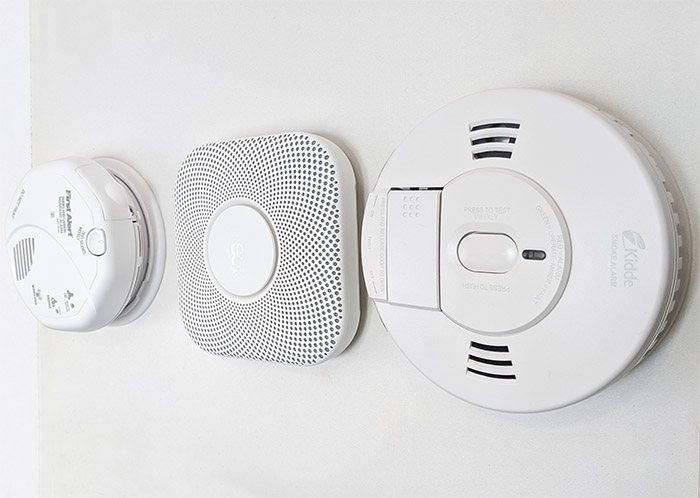
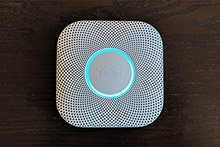
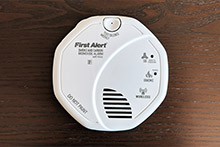
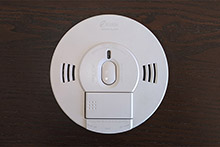
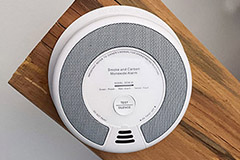

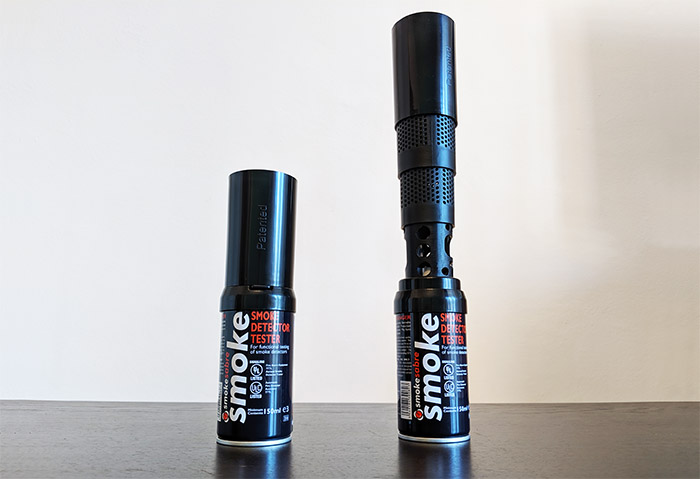
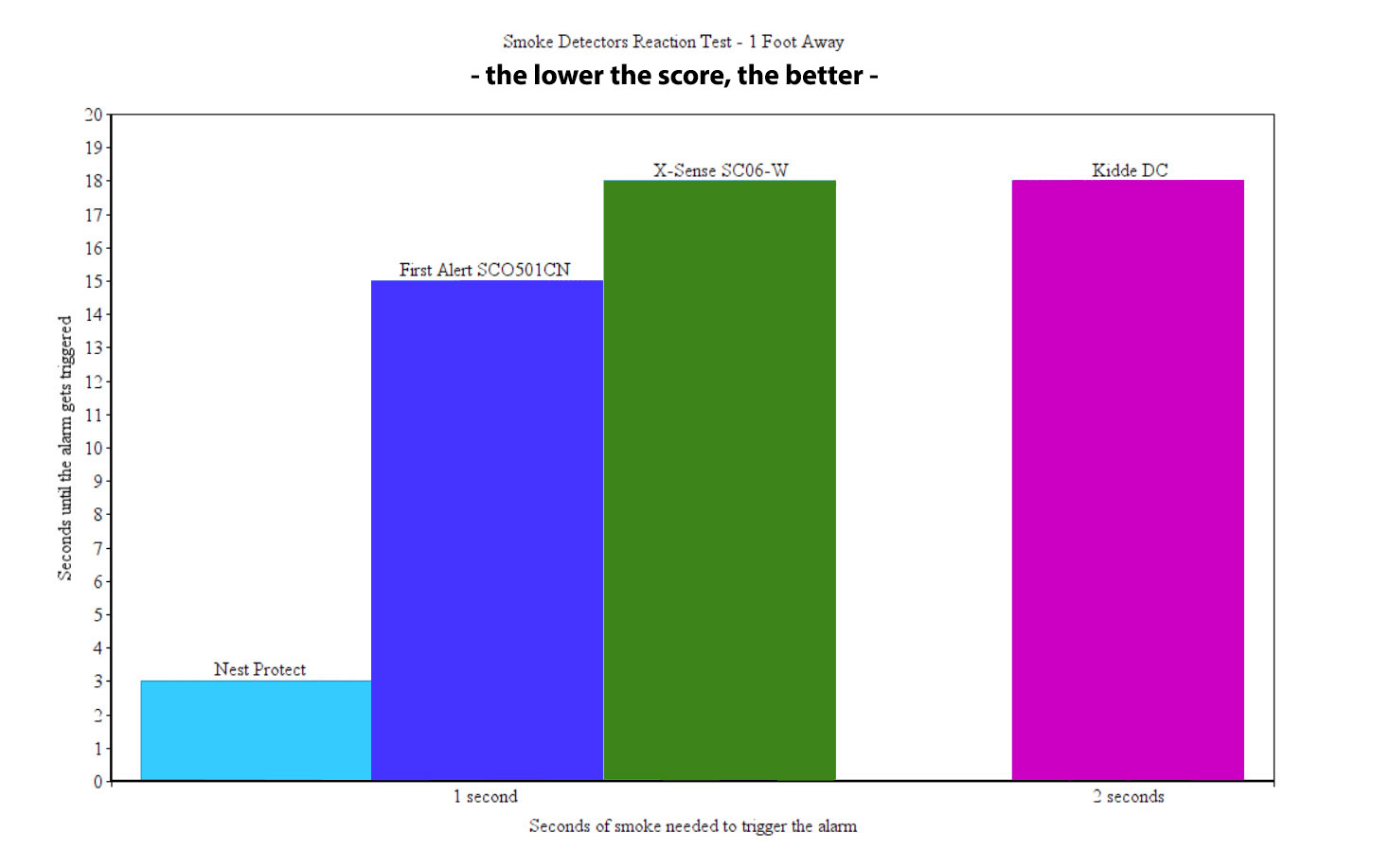
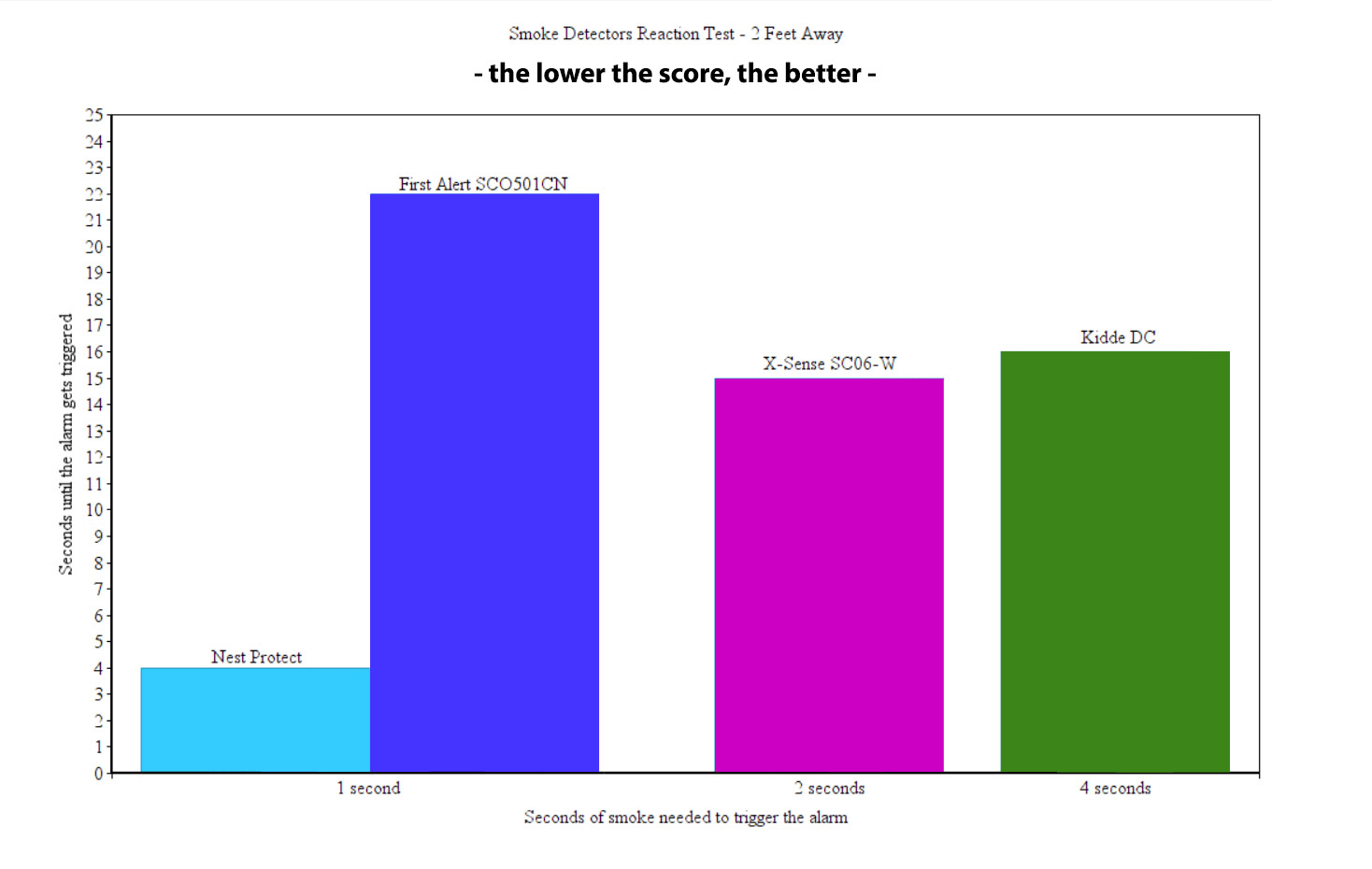
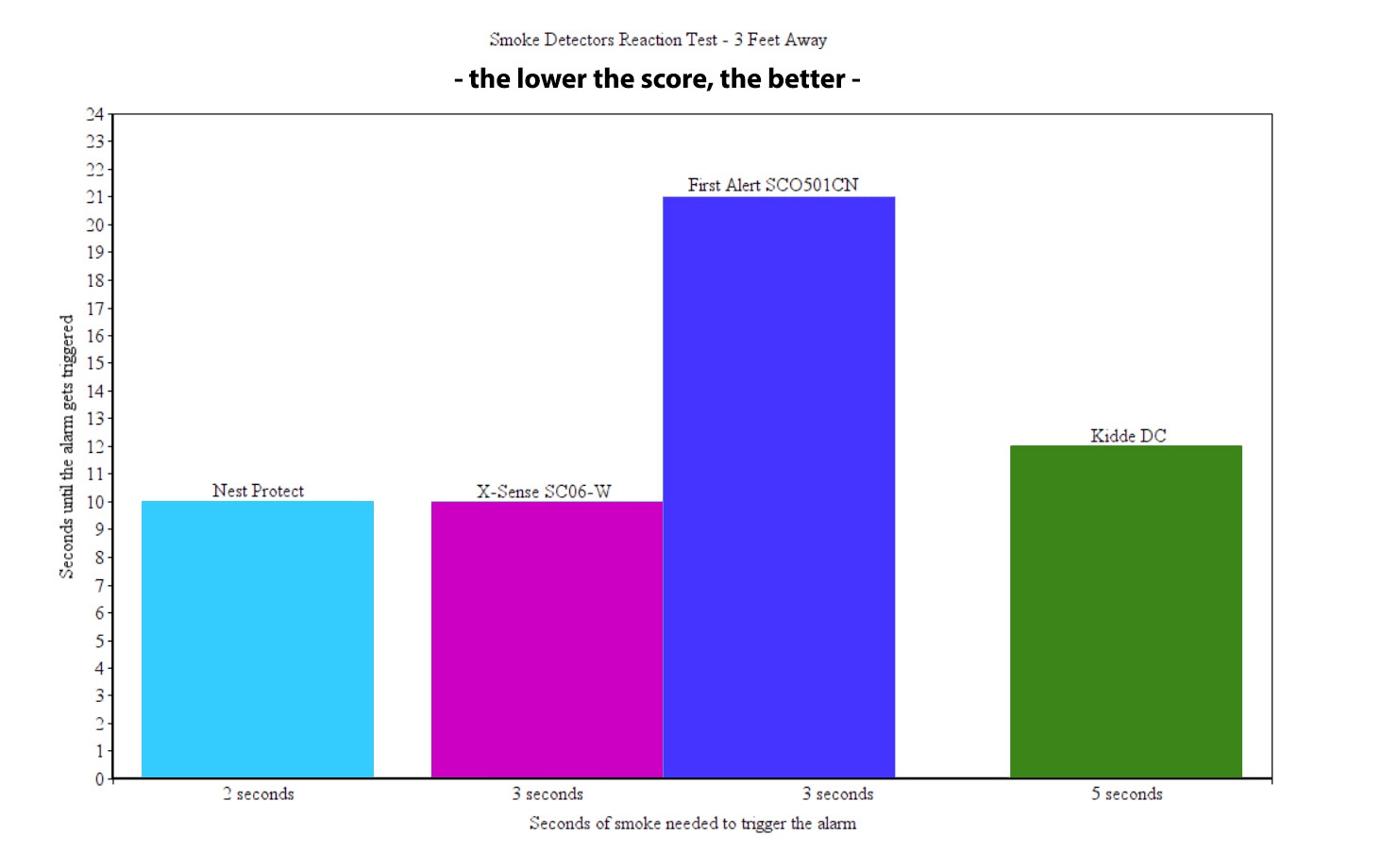

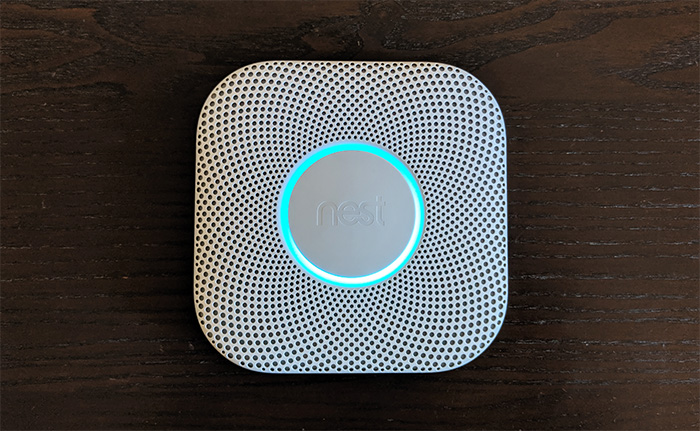
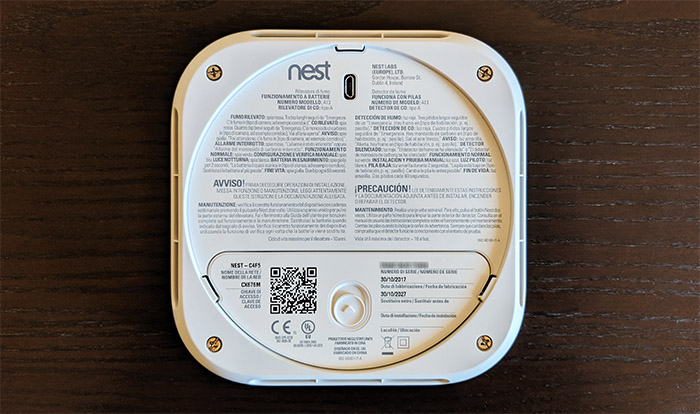
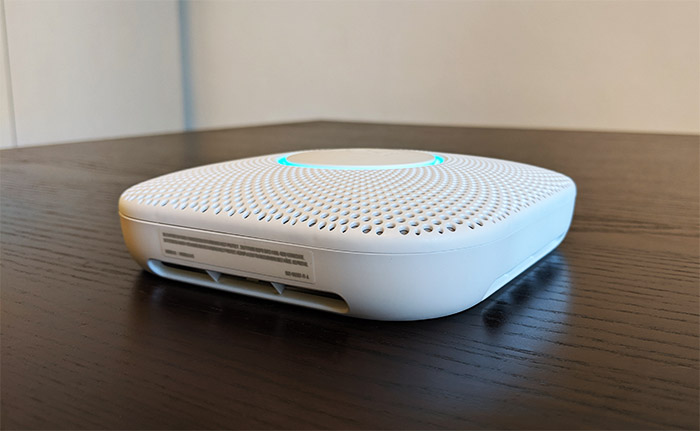
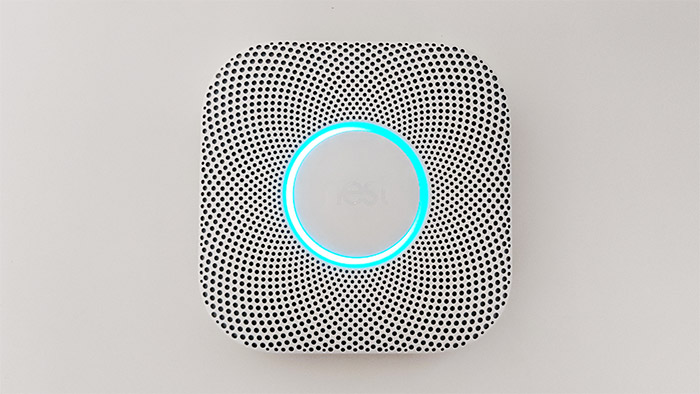
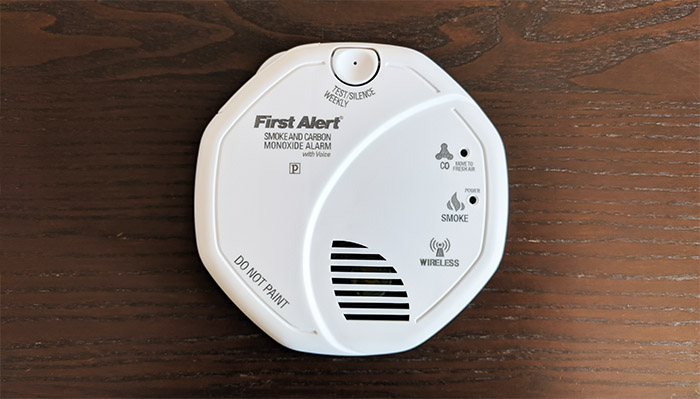
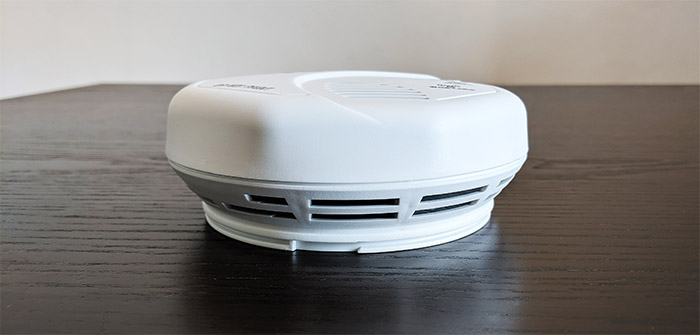
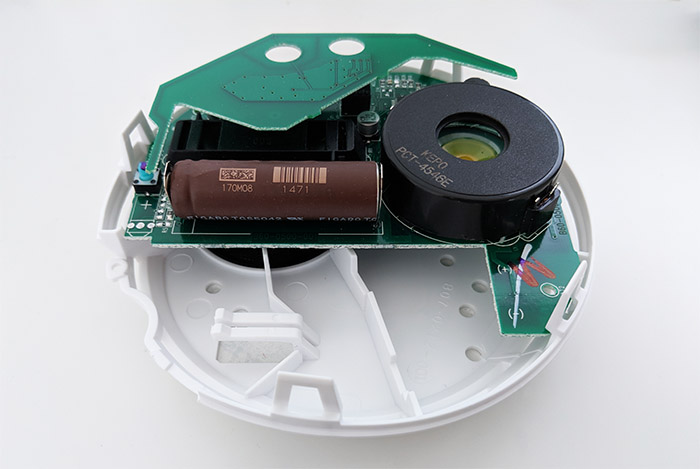
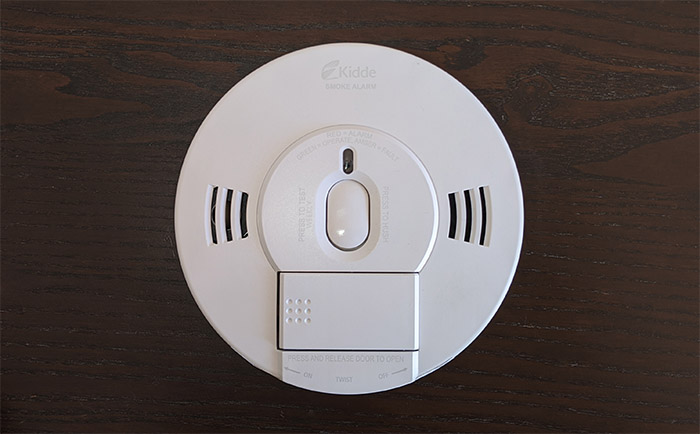
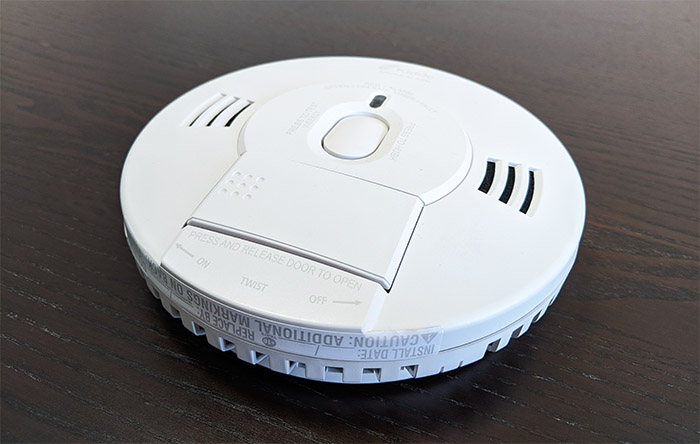
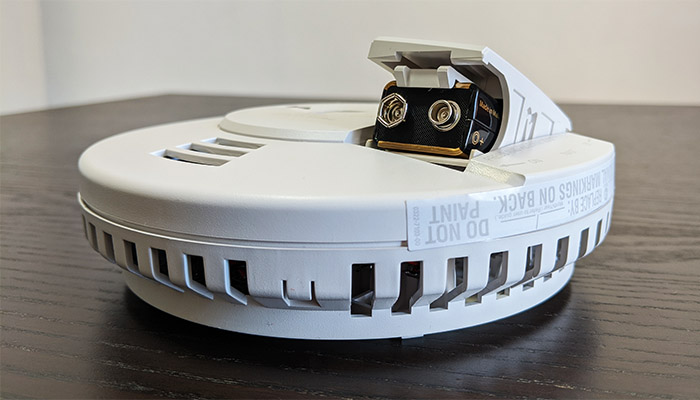
You should revise the title of the article to something like the best smoke detectors based on someone opinion gained from reading marketing pieces. The vast majority of the devices your “recommending’ don’t even carry UL listings and your bias towards wireless shows that your focus is on cool technology rather than detection capabilities. All of that rolled up by a recommendation of the Atom. Clearly the writer has never tested or employed these devices in the real world. Article is junk.
Hi! Sorry that the article didn’t meet your expectations. It’s true, not all smoke detectors are UL listed, some are ETL listed and of course there’s a bias towards the wireless connection … we’re in 2019. If you have a better list or think I should focus towards a specific product, I am open to any suggestions.
I am not sure if being in 2019 has any connection to the effectiveness of a device in an emergency situation. The point is you’re focused on cool tech with an apparent lack of testing focused on response time which I would assume is a critical factor when determining if a device is best. Especially a life safety device. But if I have to escape a fire I will keep in mind that it is 2019 and happy that I choose a device that is really cool tech not knowing how it performs when needed. As to the question “do I have a better list” I would simply state if I was going to post a best of 2019 article I would invest the minimum effort (lacking here) to develop one that focused on functionality over cool 2019 tech…
I didn’t know that people were so much against the smart features added to the smoke detectors, but I get that a no frills device would probably feel safer. I usually update my articles, so I will update this one as well as soon as possible to add the response time for each smoke detector.
When selecting the best smoke detector you just need to depend on the popular brands, but during installation, you need to take help from professional Electricians Chester Springs PA (https://www.dndenergy.com) because they will test large alarm systems and this is the best way to ensure that your smoke detector will sound during a fire.